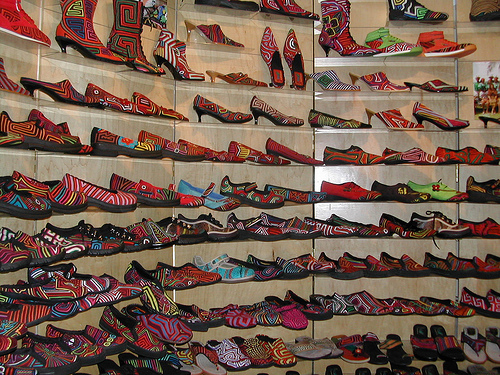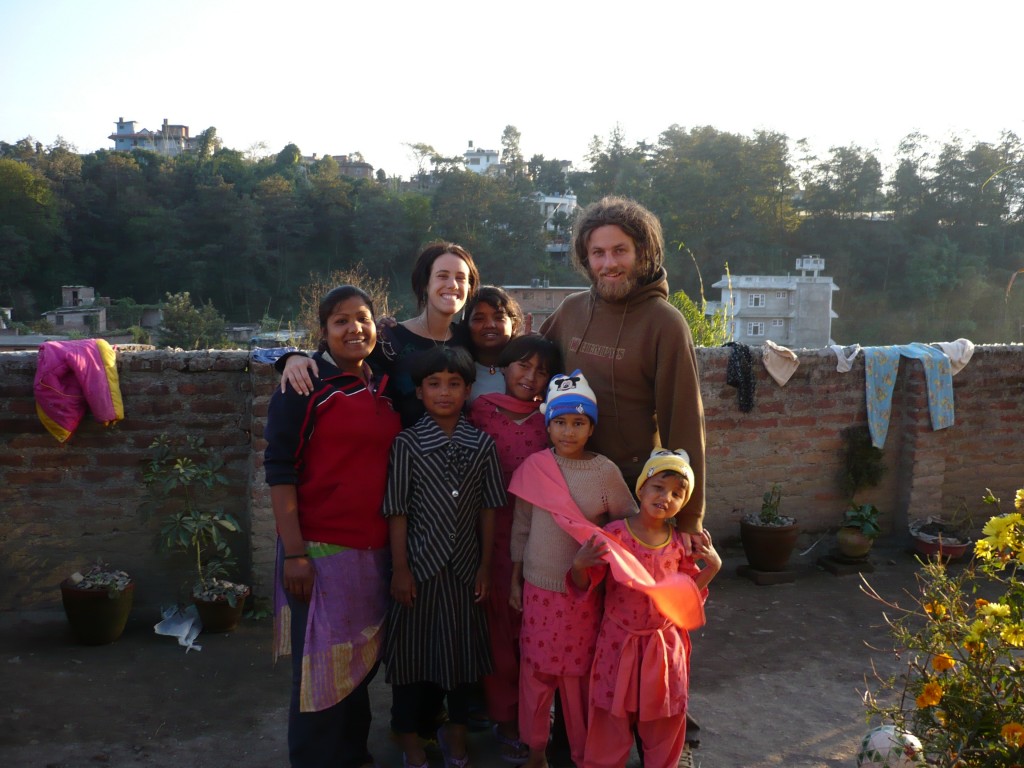During his speech titled “Accelerating the Green Economy ” at San Francisco’s Green Festival last month, Dr. Kevin Danaher, Global Exchange co-founder, spoke of the triple bottom line. The triple bottom line takes into account more than the traditional measures of a corporation’s success; it involves the organization’s social and environmental values.
As I went around talking to the exhibitors, I found that they themselves became more educated, socially conscious, and innovative as a result of the products they discovered along their travels. They aim to improve the standard of retail around the world by supporting communities and empowering small businesses worldwide.
Kuna Prints by Mama Shaman, by far the funkiest shoes at Green Festival, supports a community of Kuna matriarch crafters in Colombia. The traditional Kuna dress known as Mola were of interest to Natalia Swanson, a Colombian-born San Francisco native, who upon walking down the street with the shoes made from the Mola would be bombarded with request such as “let me buy them from you! Take them off, I want them!” The shoes are made with all vegan materials; Natalia and her husband live a vegan lifestyle. Kuna Prints supports a community that would otherwise not have many sources of income, Natalia explained. The couple has been in business for about two and a half years. When asked what kind of shoes she sells the most, she replied, “The Mary Janes. Everyone wants them.”

On their first trip to buy precious stones such as quartz and garnet in Nepal in 2005, Cameron Grace McGowan and Willie Nielson, the founders of Crystalline Dream, noticed that many impoverished children were living on the streets and decided they needed to help out in some way. They decided to become involved with the Helpless Colony Orphanage, located on the outskirts of Kathmandu, where impoverished families migrate in hopes of finding a place with opportunity. They’ve also begun to collaborate with Stones for Change. Stones for Change is a relatively new organization that hopes to change the current standards of mining by benefiting communities of artisanal miners. Their efforts will make it so that everyone can feel better about the jewelry being purchased knowing that it was acquired from fair trade sources.

Crystalline Dream’s biggest seller, Himalayan Quartz, is mined from inside a mountain named Ganesh Himal III, which stands at 24,373 feet tall. In order for the quartz to keep its energy intact, the quartz is hand mined – no machinery or blasting is used in the process. However, when they first started to buy from the local miners, Cameron and Willie noticed that the quartz stones were chipped at the points. They then took it upon themselves to educate the miners as well as pay them higher wages when they took care of the quartz in the proper manner, so as to conserve the energy and avoid chipping at the points, which makes for a more valuable crystal. Chipping was soon avoided by packing the stones with moss to protect them from banging into one another through the miners three-day trek down the mountain.
With tourism down due to the civil war in Nepal, purchasing stones from the local miners helps the community flourish. Whereas once there may have been a scarcity of food or warm clothing, the people of the community no longer have to worry about how they will obtain such necessities. In fact, one of these families was able to send one of their kids to study in Malaysia, something that would have been unattainable without the profits from mining quartz.
What these entrepreneurs have in common is that they are not only conscious of the effects of the earth, but of the communities that become empowered and developed by their businesses. The entire weekend was infused with motivational speeches bringing light to the positive messages brought forth by these new businesses: collaborate to bring about change, support organizations by spreading the word, educate each other, and make business more accountable.




One Response
nice article. It’s good to see people taking proper steps to help people where resources are allocated from rather then just pillaging the land. A business model that should be embraced more often.